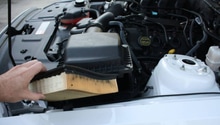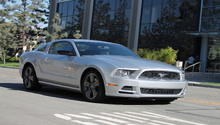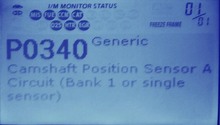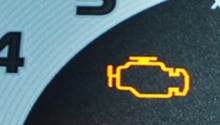Ford Mustang GT 2005-2014: Why is My Car Misfiring?
An engine misfire in the Ford Mustang GT could be a lot simpler than it sounds. This guide will shine some light on some possible causes for this issue.
This article applies to the Ford Mustang GT (2005-2014).
An engine misfire in the Ford Mustang GT is usually caused by a spark issue, or a fuel issue. If there is too much oxygen going into your engine or too little spark, this could cause the cylinders to fail, which results in a misfire. An engine misfire could cause difficulty to start the car, and it could also kill the car while idling—perhaps at a red light. A misfire will definitely cause your car to jerk quite a bit, sometimes it could jerk consistently while you're driving or idling. This issue could be a quick and simple fix, or it could be a bit more difficult, read on to learn how you can diagnose an engine misfire in your car.

Materials Needed
- Socket set
- Line disconnect tool
Step 1 – Check the spark plugs
They could be burnt.
The most common reason for an engine misfire is burnt spark plugs. When the spark plugs don't give enough spark, it causes the cylinders to fail, which results in a misfire. To diagnose this, remove the spark plug and inspect its tip. If the tip is burnt, then you've likely found your problem. Be sure to replace all the spark plugs at the same time.

If your spark plugs are in good shape, proceed to Step 2.
Step 2 – Check the spark plug wires
They could be worn or cracked.
If the spark plugs aren't giving spark, your engine will misfire. Even if your spark plugs are in good condition, if the wires are worn, they could be restricting the current, which will cause the spark plug to not create enough spark. To check the spark plug wires, bend them and look closely at the rubber for any cracks or wears. The wires should be clean and in great condition. If they are showing any signs of wears or cracks, replace them.

If the wires look good, proceed to Step 3.
Step 3 – Check fuel filter
It could be clogged.
The fuel flow could be causing the issue, and without the proper fuel quantity your engine is expecting, your car could misfire. The fuel filter is the filter between the fuel tank and the engine; overtime, it gets clogged, which restricts the fuel flow going into the engine. If you don't remember the last time you've replaced it, the time is now. You shouldn't go more than 30,000 miles without replacing your fuel filter. The fuel filter is located under your car, on the driver's side, along the frame. Remove it using your line disconnect tool, clean it very well, then blow on the back end of it, if there is no air flow, it means it's clogged and needs replacement.

If the fuel filter isn't clogged, proceed to Step 4.
Step 4 – Check the fuel pump
It could be faulty.
Like the fuel filter issue, the fuel pump could be responsible for the lack of fuel flow going to the engine. It is located inside the fuel tank, and is designed to pump the fuel from the tank through the fuel filter and into the engine. If the fuel pump is faulty, it won't pump enough fuel, which will cause a misfire. There are some signs that fuel pump will give you that will help you determine if it's faulty. If you're driving at a higher speed with a consistent gas pedal and you experience sputtering, that's the fuel pump telling you it's on its way out. As the pump gets worse, the sputtering will increase and eventually will cause your car to not start. To replace it, you will have to drop the fuel tank using the jack stands and replace it from the top of it. It's not a hard process, but it requires you to drain the tank and remove various hoses connected to it.

Related Discussions
- Hesitation and Misfire Solved - MustangForums.com
- Misfiring and Popping Issues - MustangForums.com
- Car Misfiring - MustangForums.com






